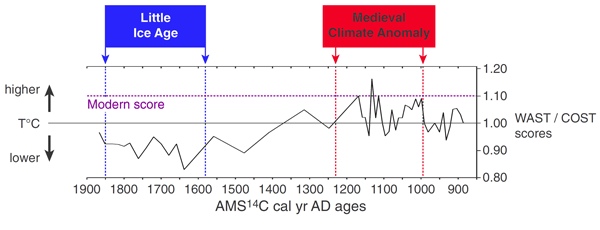Reference
Kaniewski, D., Van Campo, E., Paulissen, E., Weiss, H., Bakker, J., Rossignol, I. and Van Lerberghe, K. 2011. The medieval climate anomaly and the little Ice Age in coastal Syria inferred from pollen-derived palaeoclimatic patterns. Global and Planetary Change 78: 178-187.
Description
Based on analyses of pollen found in a 315-cm-long sediment core retrieved from alluvial deposits within the floodplain of the River Rumailiah located at 35°22'13.16"N, 35°56'11.36"E in the coastal Syrian lowland, Kaniewski et al. were able to identify key plant functional types that allowed them to construct pollen-derived Biomes (PdBs) similar to those employed by Tarasov et al. (Journal of Quaternary Science 13: 335-344), after which they were able to relate "the ratio of PdB warm steppe (WAST) divided by PdB cool steppe (COST) to local temperature, as also was done by Tarasov et al. The end result of this endeavor was their identification of the timeframe of the MWP (AD 1000-1230) and their finding that at approximately AD 1130, the MWP exhibited "warmer temperatures compared to AD 2000," yielding MWP > CWP.





